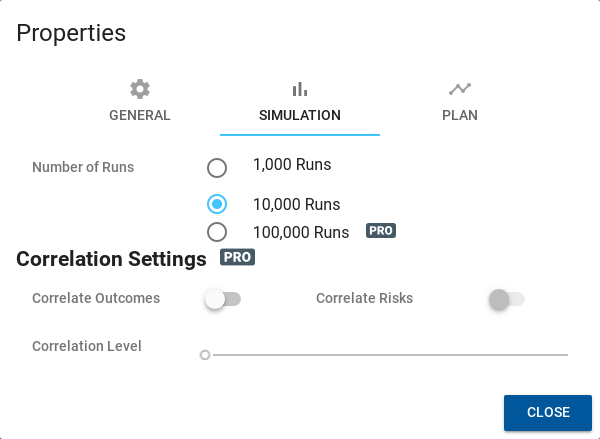Correlated Outcomes
Correlated Outcomes is a pro feature which requires a paid subscription. Sign Up Now!
Introduction
In a normal DartCannon simulation, the outcome of one particular task or line item has no relation to any other. When the range of estimates represents exclusively inherent uncertainty, total randomness best simulates possible outcomes. Cases exist however where all outcomes will tend towards the high end or low end of estimates, for instance when there is a systematic estimation bias.
DartCannon provides the option to enable and tune correlated outcomes.
Enabling Correlation
Correlated outcomes get enabled on a per-simulation basis. Enabling correlation is under 'Simulation' in a simulation's properties:

Correlation Options
Three options control correlated outcomes:
- Correlate Items - Causes the outcomes of line items or tasks to be correlated.
- Correlate Risks - Also correlates the outcomes of risks
- Correlation Level - Degree of correlation. 0 means no correlation, giving the same outcome as if correlation was not enabled. 100% means that outcomes are exactly matched.
Technical Details & Caveats
Correlations with Monte Carlo simulations such as DartCannon are very technical. Here are a few details on our implementation and things to keep in mind.
Correlation Method
DartCannon uses the Gaussian Cupola method to generate correlated random variables. There are a lot of methods to go about generating correlated random numbers - we use the cupola method for its accuracy with the trade-off being a higher performance impact than other methods.
Performance Impact
Enabling correlation incurs a fairly major performance impact, causing simulations to run up to 50% slower depending on if risks are included and the size of the simulation.
Increased Uncertainty
Adding correlation into a simulation will increase uncertainty, increasing the size of confidence intervals. Effectively, adding correlation increases the chance of extreme results (all high, all low) relative to more central outcomes.